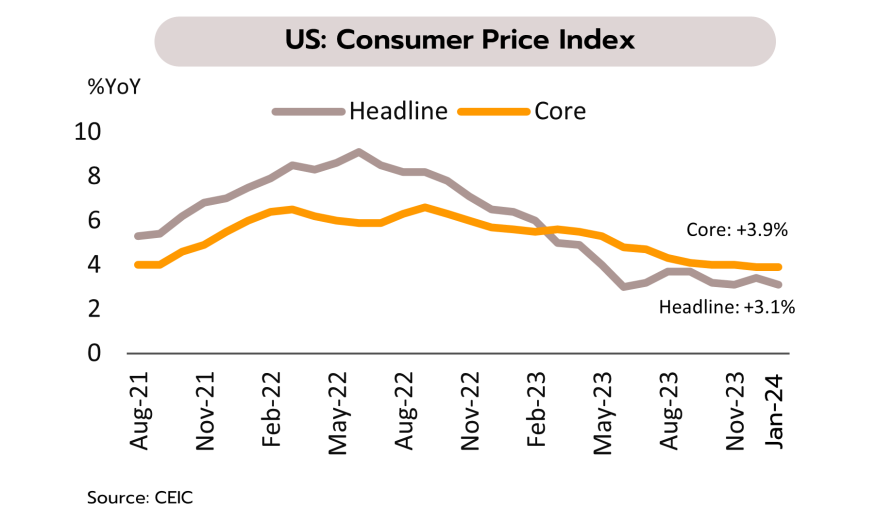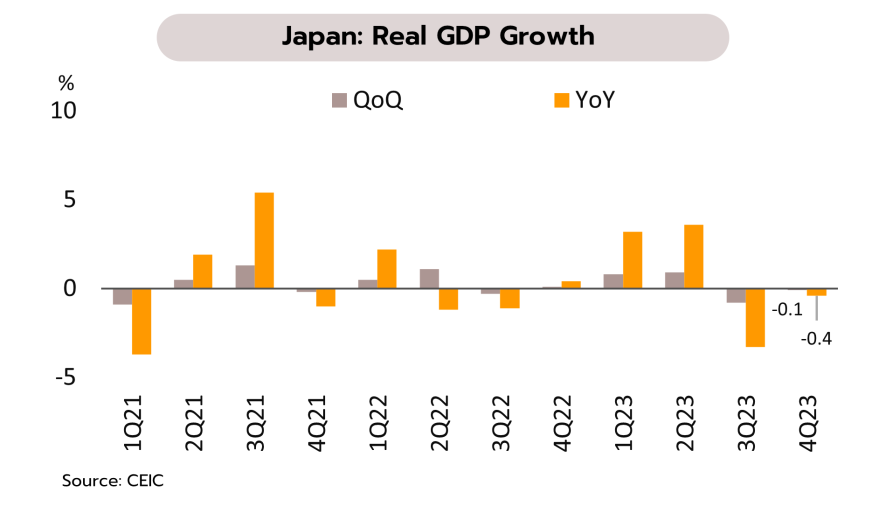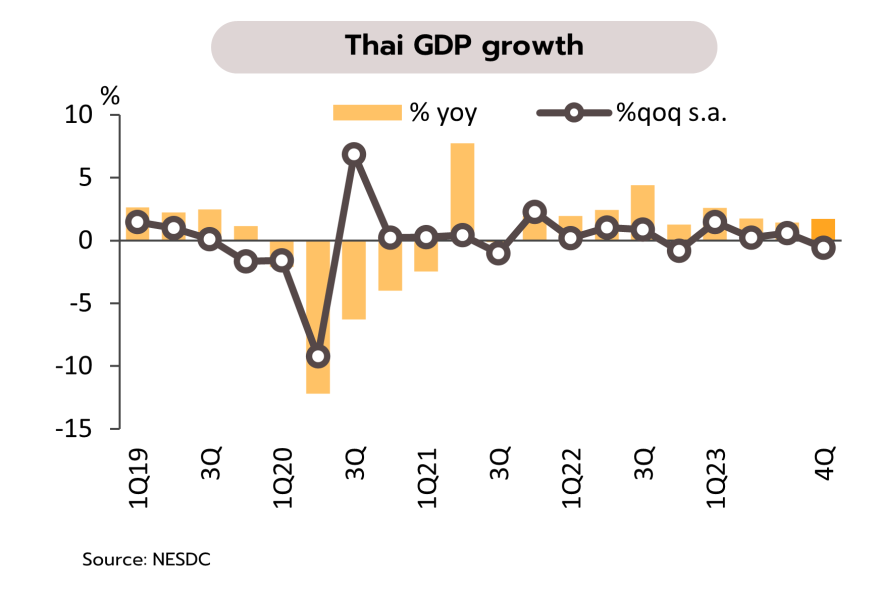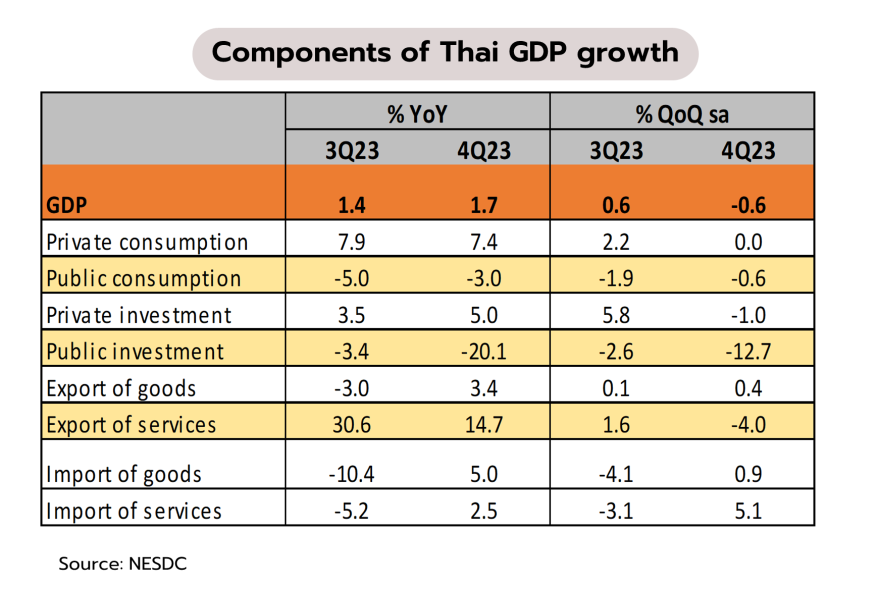Products
Products
Recommendation
Personal
Personal
Personal
Personal
Personal
Personal
Business
Business
Business
Trade Services
Products
Import Services
Export Services
International Transfer
Trade Finance
Digital Channel
Krungsri Structured Trade Solutions
Business
Global Markets
Services
Global Markets
FX & Derivatives
Exchange Rates
Market Commentary
Digital Channel
recommend
FX@Krungsri
Business
Business







 Although Japan entered a technical recession in Q4 of 2023, rising wages should provide the space for the BOJ to abandon its negative interest rate policy in mid-2024. With private sector consumption down -0.2% QoQ and business expenditure falling -0.1%, the Japanese economy shrank by -0.4% YoY and -0.1% QoQ in Q4. Given that GDP contracted -3.3% YoY and -0.8% QoQ in Q3 of 2023, Japan thus tipped into a technical recession.
Although Japan entered a technical recession in Q4 of 2023, rising wages should provide the space for the BOJ to abandon its negative interest rate policy in mid-2024. With private sector consumption down -0.2% QoQ and business expenditure falling -0.1%, the Japanese economy shrank by -0.4% YoY and -0.1% QoQ in Q4. Given that GDP contracted -3.3% YoY and -0.8% QoQ in Q3 of 2023, Japan thus tipped into a technical recession.





